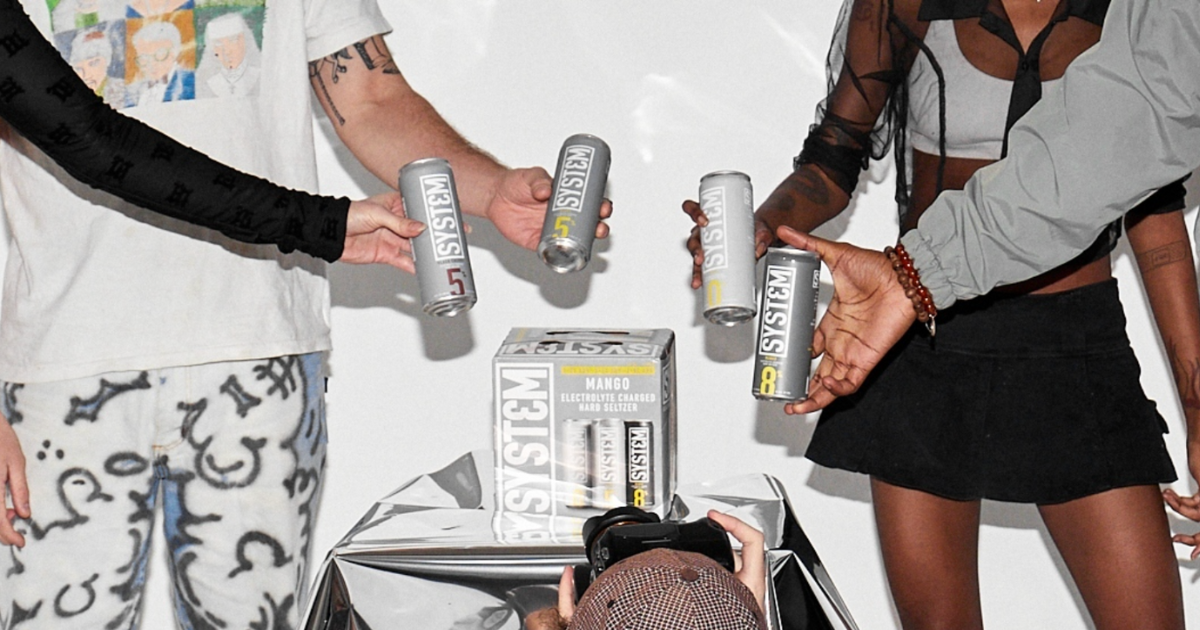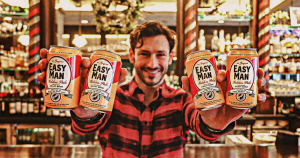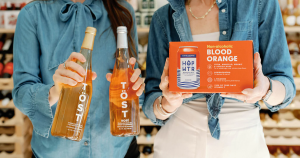In 2024, the most prominent theme in drinking behavior will be a blurred line between alcoholic and non-alcoholic beverages. Why? Three related trends are converging, research firms are calling for an end to the “non-alc” distinction, and industry visionary Ben Branson (founder of Seedlip and Seasn) is shouting the same sentiment from the rooftops.
Flex Drinking
The first related trend, flex drinking, represents a nuanced shift in beverage choices. Unlike the more traditional approach of abstinence or mindful drinking, which often emphasizes reduced alcohol intake for health reasons, flex drinking is about embracing optionality. It caters to those who enjoy both alcoholic and non-alcoholic beverages, without a strong inclination towards either. This flexibility in drinking aligns with contemporary consumer behaviors that prioritize personal choice and adaptability. It reflects a shift towards individualized consumption patterns, where people tailor their drinking habits to specific occasions and moods.
ABV Optionality
Alongside flex drinking, there’s a growing consumer awareness of alcohol by volume (ABV) levels—plus an embrace of the full ABV spectrum. This shift toward ABV optionality is reflective of a more nuanced approach to alcohol consumption, where individuals are not just choosing between alcoholic and non-alcoholic options, but also seeking variety across different ABV levels. Innovative bars such as Tokyo’s SUMADORI and Copenhagen’s Bird are indicative of this trend, offering an array of drinks at varying ABVs. This trend is a testament to the demand for a more fine-tuned approach to alcohol intake.
Inclusive Drinking Systems
On the product side, we’re seeing the emergence of inclusive drinking systems. Brands like System Seltzer and Gradient cater to a varied range of preferences within a single offering. System Seltzer’s innovative nine-pack, with options ranging from 0% to 8% ABV, offers a unique solution that accommodates everyone at a social gathering (or one person at different points in an evening). Similarly, Gradient’s “reducing alcohol system,” with its gradation of strengths, makes moderation easy. Both approaches are indicative of the desire for flexibility in alcohol consumption.
The End of “Non-Alc”?
Amid these shifts, the importance of language in marketing cannot be overstated. A recent report suggests that the non-alc sector needs to adopt a new lexicon to better position itself in the market. The study, conducted by alcohol-free retailer Club Soda and marketing agency Boldspace, argues that terms like “alternatives,” “mocktails,” or “free from” often used in marketing may not be the most effective approach, especially for standalone brands in the non-alc category.
The report advises these brands to focus on presenting the product’s alcohol by volume (ABV) without emphasizing the non-alc aspect. This strategy is seen as more effective for standalone brands, as opposed to larger companies known for alcoholic drinks (who can leverage the equity in their master brand but must delineate from it).
What the “Father of Non-Alc” Has to Say
While he may be known as the “Father of Non-Alc,” Seedlip founder Ben Branson is similarly calling for the end of “non-alc.” In our recent interview, he remarked: “It’s really funny, when someone asks me what I do, I just say, ‘I’m in drinks.’ And they immediately think that means alcohol. I could be in milk, for God’s sake! There’s still a hell of a long way to go in terms of societal norms.” Ben added a word of warning for brand founders: “If you’re building a brand and the ABV of your brand is a core part of your name or your packaging—dangerous red flags. I’d be starting to re-think that.”
Ben’s more recent musings on our association of drinking with alcohol are particularly poignant. On social media, he declared: “I start drinking as soon as I wake up. (Bet you thought I meant alcohol.) And that’s the problem. We don’t have an immediate assumption for any other verb I can think of… Eating / Driving / Watching / Reading / Listening / Sleeping. But we do for drinking. It annoys me. We all drink. All the time and all kinds of things.” The beverage industry, Ben noted, is at a point where it can celebrate the widest variety of choices ever available: “We’re actually drinking the most diverse variety of things ever… Let’s forget about the ‘dampness’ of drinks and drinking and remember we all drink all kinds of drinks all the time.”
What’s Next?
As we look toward the future, we’re clearly moving toward a more nuanced approach to drinking that goes beyond the binary alcoholic / non-alcoholic distinction. Whether it’s the emergence of inclusive drinking systems, increased ABV optionality, or the popularity of flex drinking, it’s all about embracing personal choice. Insights from leaders like Ben remind us of the importance of language in this evolution. So, let’s think about more accurate monikers as we navigate this new phase.






